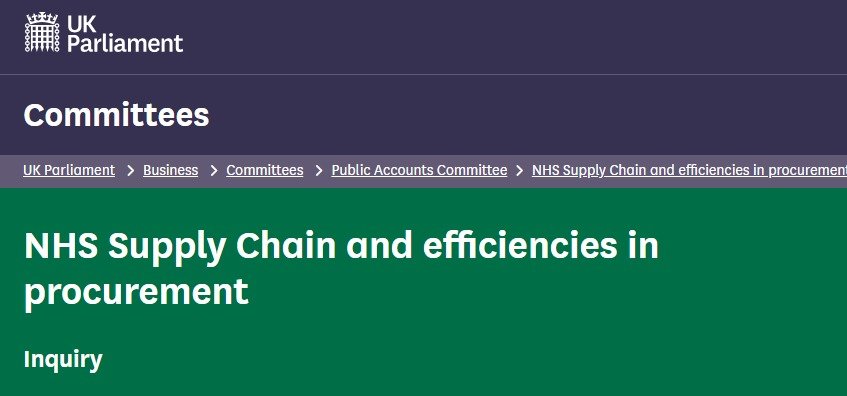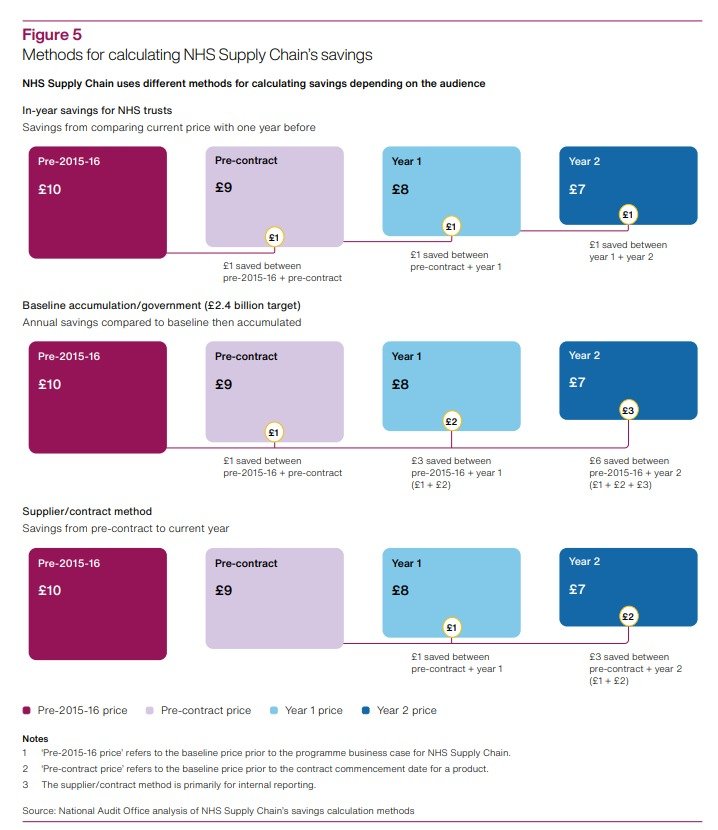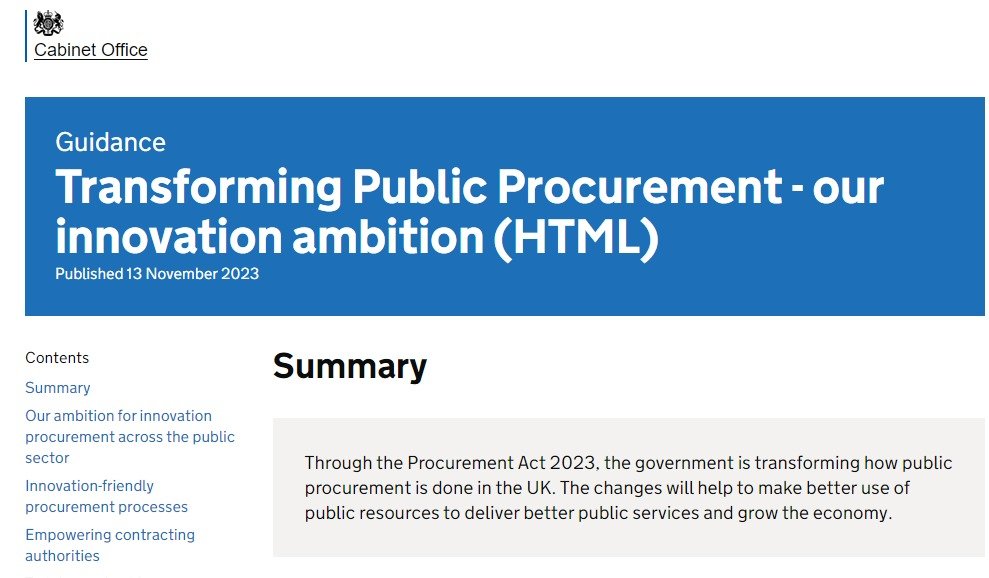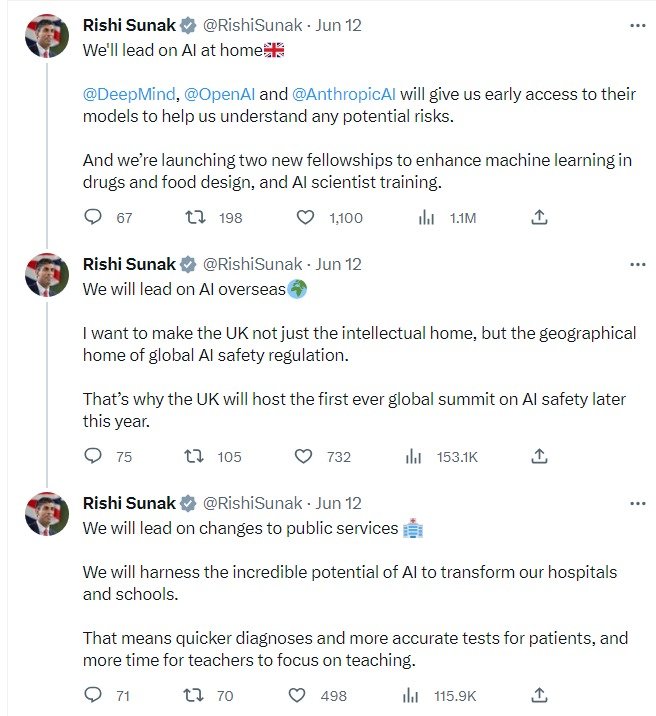The UK Government has today published its AI Opportunities Action Plan, focused on “Ramping up AI adoption across the UK to boost economic growth, provide jobs for the future and improve people's everyday lives”. The plan heavily focuses on public sector AI adoption and formulates a series of recommendations to boost AI procurement. In this post, I highlight some aspects from a procurement perspective.
The action plan has three goals: (1) invest in the foundations of AI;
(2) push hard on cross-economy AI adoption; and (3) position the UK as an AI maker, not an AI taker.
The second goal further details that “The public sector should rapidly pilot and scale AI products and services and encourage the private sector to do the same. This will drive better experiences and outcomes for citizens and boost productivity”, and thus foresees a significant role for the adoption of AI by the public sector. The plan stresses that “AI should become core to how we think about delivering services, transforming citizens’ experiences, and improving productivity. … government should also focus on its role as a major user and customer of AI and how it uses its powers to catalyse private sector adoption”.
Coupled with the current budget and expectations of public sector productivity gains, the action plan will put AI adoption top of the agenda for public sector organisations (if it wasn’t there already…).
The plan also formulates a series of core principles underpinning those goals, which include the need to “Invest in becoming a great customer: government purchasing power can be a huge lever for improving public services, shaping new markets in AI, and boosting the domestic ecosystem. But doing this well is not easy - it will require real leadership and radical change, especially in procurement.”
Focus on AI procurement
In more detail, under section 2 of the plan, the public sector should adopt a “Scan > Pilot > Scale” approach with several implications for procurement — which the plan considers will need to be thought of differently. The procurement implications will mainly concern the pilot and scale phases of the proposed approach. The plan sets out the following:
Pilot - rapidly developing prototypes or fast light-touch procurement to spin up pilots in high-impact areas, robust evaluation and publishing results. This will require:
34. Consistent use of a framework for how to source AI - whether to build in-house, buy, or run innovation challenges - that evolves over time, given data, capability, industry contexts and evaluation of what’s worked. Where appropriate, the government should support open-source solutions that can be adopted by other organisations and design processes with startups and other innovators in mind.
35. A rapid prototyping capability that can be drawn on for key projects where needed, including technical and delivery resource to build and test proof of concepts, leveraging in-house AI expertise, together with specialists in design and user experience.
36. Specific support to hire external AI talent. Creation of a technical senior civil servant stream, benchmarking of internal AI-related role pay to at least 75% of private-sector rate and a technical AI recruitment screening process.
37. A data-rich experimentation environment including a streamlined approach to accessing data sets, access to language models and necessary infrastructure like compute.
38. A faster, multi-stage gated and scaling AI procurement process that enables easy and quick access to small-scale funding for pilots and only layers bureaucratic controls as the investment-size gets larger. Multi-staged “Competitive Flexible Procedures” should be encouraged, and startups compensated for the rounds they make it through.
Some of these proposals go to the current weaknesses in public sector AI procurement, such as the absence of a clear and consistent framework for the procurement of AI, limited use of open source solutions, limitations in accessing public sector specific data (on which section 1.2 includes more recommendations), or, notoriously, a large digital skills gap in the public sector. Implementing measures to address these issues would clearly make a difference. However, the plan does not contain any details on the level of public finance available to make the required investments — especially in public sector digital skills — and the press release accompanying the plan solely mentions investments committed by private companies seeking to develop data centres or a consultancy tech hub. The government’s response to the plan does not provide details either. Without a dedicated and ambitious investment plan, these recommendations cannot be implemented.
Moreover, some of the other proposals around prototypes and light-touch procurement processes can be problematic when coupled with the Procurement Act 2023 (soon to enter into force).
First, it is worth highlighting that the procurement of prototypes and their development is susceptible of direct award under the Procurement Act 2023, even where the benefits do not accrue exclusively to the contracting authority for its use in the conduct of its own affairs (as still the requirement under PCR2015, reg.14), and without this necessarily requiring the output of the development/prototype to be transferred to the contracting authority (s.41 PA23 and Sch.5 paras 2 and 3). Moreover, under current guidance on Intellectual Property Rights (IPR), the preferred option is to leave IPR under supplier ownership “where the creation of any New IP created cannot easily be separated from the (Supplier’s) Existing IP. For example, where suppliers provide software as a service solutions (SaaS), New IP (principally code) cannot be separated from the supplier’s Existing IP because it all resides as a single entity on a remote server.” In that case, the contracting authority is advised to acquire licenced rights.
In my view, the combination of these two aspects could result in the use of public contracts to subsidise the development of prototypes that remain in private ownership and, importantly, this would be done through non-competitive procedures. Moreover, this could also lead to the subsequent direct award of contracts to scale up the deployment of the prototype on grounds of the IPR exclusivity thus generated (s.41 PA23 and Sch.5 para 5). In my view, this approach would be problematic and create a potential loophole in competitive procurement of AI solutions. It would thus be highly advisable to revise guidance on IPR, specifically in relation to the development of AI prototypes, to avoid this situation — perhaps with a default position being to retain IP under Crown ownership in these cases. It would also seem that there is a broader reflection to be had on the interaction between R&D grants and procurement contracts, as procurement approaches to prototyping can create other difficulties (eg on liability to third parties, etc).
Second, the use of competitive flexible procedures (CFPs) should be considered in more detail. Under the Procurement Act 2023, CFPs are a ‘DIY’ procedure because each contracting authority can come up with its own design and requirements, thus making each CFP unique. This would significantly raise participation costs and be prone to litigation and other problems. In that regard, it would be desirable to create a single ‘AI CFP’ to be used across the board, to save AI companies (and specially the tech start-ups targeted in the AI action plan) from having to spend resource ‘learning’ the rules of the relevant CFP, but also to reduce the need for specialist knowledge at contracting authority level. Given the extremely limited experience with competitive dialogues and innovation partnerships to date, expecting contracting authorities to develop very tailored approaches to CFPs seems excessively optimistic in any case.
The plan then moves from piloting to scaling up and sets out the following:
Scale - identifying successful pilots that can be applied in different settings to support citizens (e.g. to reduce waiting lists or minimise time and cost to complete paperwork) and rolling them out beyond organisational boundaries. Scale is essential if AI is to have a meaningful impact on productivity, effectiveness and citizen experience, as well as maximising government spending power. Moreover, doing this well and procuring in a way that benefits innovators is a powerful lever for upending the cliché that the UK is good at invention, but poor at commercialisation. It will require:
39. A scaling service for successful pilots with senior support and central funding resource. The government should support a select number of proven pilots to scale - with central finance and tools available to avoid fragmentation across systems and budgets - and achieve up to national level reach.
40. Mission-focussed national AI tenders to support rapid adoption across de-centralised systems led by the mission delivery boards. An example of tendering to enable scale is the NHS’s AI Diagnostic Fund allocating £21 million to twelve imaging networks, covering 66 NHS trusts across England, significantly speeding up the roll out of AI diagnostic tools nationwide. However, these tenders should be designed to encourage new entrants, avoiding reliance on commercial frameworks where possible.
41. Development or procurement of a scalable AI tech stack that supports the use of specialist narrow and large language models for tens or hundreds of millions of citizen interactions across the UK.
42. Mandating infrastructure interoperability, code reusability and open sourcing. The AI infrastructure choice at-scale should be standardised, tools should be built with reusable modular code components, and code-base open-sourcing where possible.
As above, this section also includes recommendations that would focus on key areas of current weakness, such as the need to provide additional support to scale up successful pilots, as well as taking a more decided approach to interoperability and open source.
However, this approach also raises some questions, as it seems very central government focused. It is unclear whether the same type of approach would be helpful in the context of local AI procurement, or how to avoid significant levels of procurement centralisation in the rollout of scaled-up solutions. The issue of “commercial frameworks” (or vehicles) is also intriguing, as it seems counterintuitive that commercial vehicles should be avoided at the point of scaling-up, when the solutions should be sufficiently standardised and volume could be a significant driver of cost for the public sector. It can well be that each scaling-up context is different and, in that case, avoidance of commercial vehicles might not always be the way forward. More generally, a reflection on whether to use (open) frameworks or dynamic markets also seems necessary, and there are good reasons to think that in fast-moving markets, (open) frameworks are not the way to go.
The plan contains a further procurement-related recommendation to enable public and private sectors to reinforce each other: “Procure smartly from the AI ecosystem as both its largest customer and as a market shaper. Innovative AI suppliers from the UK and around the world should be engaged to support demand and encourage investment. Procurement contract terms should set standards (e.g. quality), requirements, and best practice (e.g. performance evaluations). “Contemplation” clauses should be included in contracts to ensure the government remains agile to a rapidly changing AI ecosystem by mandating that contractors regularly assess and adopt newer technologies.”
At this level of generality, it is hard to disagree with the recommendation. However, as mentioned above, the extent to which the public sector digital skills gap is reduced will be determinative of how far AI procurement can go in contract design, contract and performance management, and other crucial tasks. I am also not sure whether ‘contemplation’ means technological update requirements, or rather rights to curtail, modify or terminate the contract for the contracting authority on technological (or other?) grounds. Some further thinking also seems required here.
Overall impression (aka hot take)
My overall impression is that the plan targets central government and specific types of AI, and that it contains recommendations that will be difficult and expensive to implement. Without a clear view of the level of public investment that will be available to implement the plan, it is hard to assess its likely impact — although issues such as overcoming the public sector digital skills gap and the compounded complexity of AI procurement and procurement under new rules seem to me to pose a significant challenge. I think it will be difficult for contracting authorities outside of central government, and in particular at the local level, to finds way to implement the plan in their own operations, despite the clear push for local level public sector AI adoption.
Linked to this, I think the procurement-related proposals in the action plan merit some further discussion and consideration. In that regard, they can be the basis for more focused thought, especially in relation to non-central government AI adoption, such as work carried out under the National Taskforce for Procurement of AI in Local Government proposed by the Ada Lovelace Institute,


























